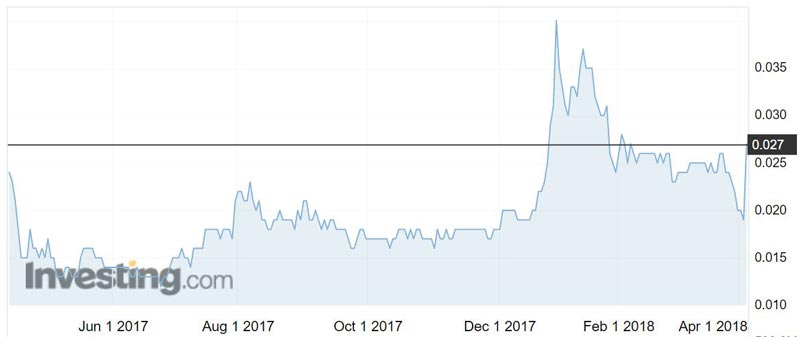Mining merger and acquisition activity rises as juniors fetch a premium

Pic: John W Banagan / Stone via Getty Images
In the past few weeks the resources industry has seen an uptick in merger and acquisition activity — in particular takeovers of juniors by their larger counterparts.
The common factor among many deals being done is that buyers are paying a premium.
The latest on the list is Mineral Resources’ (ASX:MIN) proposed friendly tie-up with junior iron ore producer Atlas Iron (ASX:AGO).
Atlas struggled to stay afloat after the iron ore price bombed below $US40 per tonne in late 2015. Although the price has since recovered, Atlas is still finding it hard to reduce costs and make a profit and believes this is its best option for financial security.
MinRes is a $3.2 billion company, with its share price closing at $17.24 before it went into a trading halt last Thursday.
The news saw Atlas shares close up 42.1 per cent at 2.7c on Monday.

RBC Capital Markets’ mining analyst Paul Hissey says companies are “better off paying more at the bottom of the cycle, than less at the top of the cycle”.
“Whatever price assets or companies are today, they will inevitably move higher as prices rise, and competition increases,” he said in RBC’s latest research note.
“A company with five years remaining in the portfolio may not be able to wait another full cycle to capture new assets.
“While anecdotally we aren’t quite sure investors are ready to embrace what might seem a novel concept (the scars are still fresh), we believe there is considerable upside for those who are prepared to wear some short-term discomfort for a longer-term benefit by acting now.”
The Australian resource sector is healthier than it has been for more than a decade, according to Mr Hissey.
“As we observe the sector now, the clock arrives back at midnight, with prices starting to move, while capital remains low, and operating costs only show early signs of upwards movement,” Mr Hissey noted.
“High margins, low/no debt and manageable costs are identifiers we haven’t seen in resources for more than a decade.”
Atlas boss Cliff Lawrenson told Stockhead that MinRes is much better placed to help get its Corunna Downs and McPhee Creek projects in the iron ore-rich Pilbara region of Western Australia off the ground.
- Bookmark this link for small cap breaking news
- Discuss small cap news in our Facebook group
- Follow us on Facebook or Twitter
- Subscribe to our daily newsletter
“We just don’t have the balance sheet size, we don’t have the cash to do it, so we are sitting with projects like Corruna and McPhee that are difficult for us to liberate in the short-term,” Mr Lawrenson said.
But MinRes has a “bigger balance sheet, more money, capability beyond ours and it’s easier for them to get them going”.
The larger rival also has a lower cost base and can help Atlas’ projects operate more cheaply.
“Their view is they can reduce our costs significantly from where we are and to be frank they’re probably right because they are an owner operator, which means they own plant and equipment that we otherwise bring contractors in for,” Mr Lawrenson explained.
“This is part of their bigger plan, if you like, of building a sustainable iron ore business up in the Pilbara.”
S&P Global Ratings agrees the marriage is a good one for Atlas’ credit rating.
“S&P Global Ratings views that the proposed merger, if successful, would be positive to Atlas Iron’s credit quality,” the ratings agency said.
“While we do not rate Mineral Resources, we view that it has a materially stronger credit quality than that of Atlas Iron, due to its more diversified operations, larger scale, and stronger balance sheet.”
Other junior explorers that are being snapped up by larger players willing to pay a premium include copper plays Avanco Resources (ASX:AVB) and Altona Mining (ASX:AOH).
In late March, OZ Minerals (ASX:OZL) tabled a $444 million offer for Avanco – a deal that values the junior at more than double its pre-offer market cap of $189 million.
Altona, meanwhile, was recently swallowed up by Canada’s Copper Mountain Mining (ASX:C6C) in a $93 million all-scrip deal – a 41.7 per cent premium to the closing price of Altona’s share price before the offer was announced.
Copper Mountain CFO Rod Shier told Stockhead last week that the company had reviewed over 100 projects before Altona’s Eva project was identified as the best option because it was the closest to near-term production with all key permits already in place.
“We continue to look for opportunities as our growth strategy includes M&A activity,” he said.
“There are very few development opportunities around currently, and if they emerge they are likely to be acquired if the positive copper market fundamentals prevail.”
UNLOCK INSIGHTS
Discover the untold stories of emerging ASX stocks.
Daily news and expert analysis, it's free to subscribe.
By proceeding, you confirm you understand that we handle personal information in accordance with our Privacy Policy.








